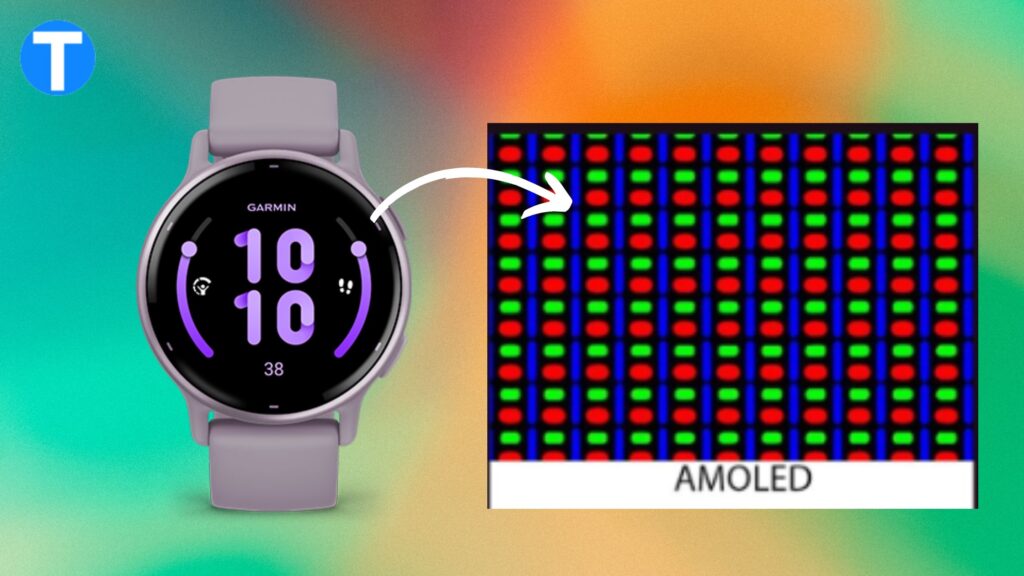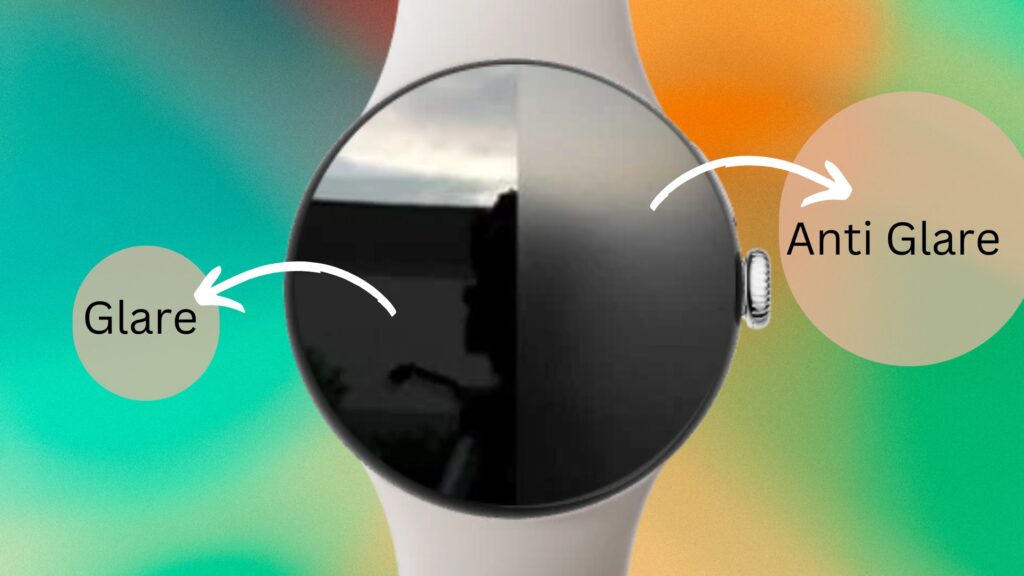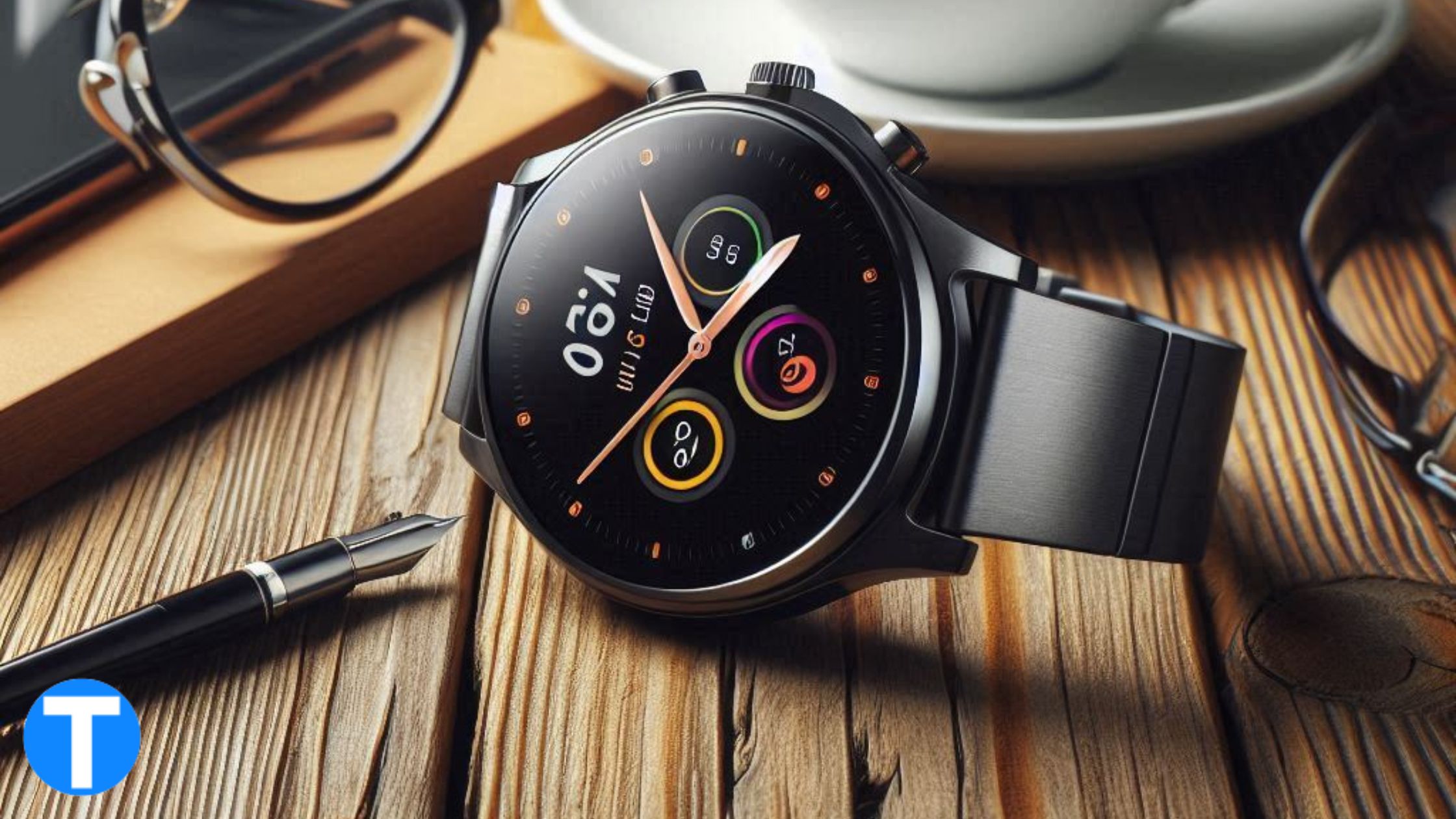It is important to choose the right display for your needs among the available options. AMOLED screens are becoming a top choice for many people. However, what is an AMOLED display in a smartwatch, and why should you opt for it? This article explains how AMOLED technology works. You should consider its functionality, benefits, and whether it is worth the cost.
Let’s compare the performance of AMOLED displays with other display types, such as OLED and LCD, debunk common myths, and explore why having an AMOLED display in your smartwatch might be a great choice. Learn more about AMOLED screens, which offer high-quality images that are easy to see even in sunny weather while consuming less power.
What is AMOLED Display in a Smartwatch & How It Works
In an AMOLED (Active Matrix Organic Light Emitting Diode) smartwatch display, organic compounds emit light when electricity passes through them. Each pixel lights up independently, making this technology known for its vivid colors and deep blacks.

These screens are thinner and more energy-efficient than regular LCDs and OLEDs because they do not require a backlight. The display provides high-contrast images, is more readable in bright sunlight, and conserves battery life—an essential feature for smartwatches—as it lights up only the necessary pixels.
8 Benefits of AMOLED Display
- Superior color reproduction: AMOLED displays deliver vibrant and accurate colors.
- Deep blacks: Each pixel can individually turn off, resulting in true black levels.
- Faster refresh rates: On smart devices, AMOLED screens respond to touch inputs quickly, making interaction swift and information retrieval occur precisely when expected.
- Better energy efficiency (for dark themes): It consumes less power when displaying darker content, as mentioned earlier, since each pixel can individually turn off.
- Thinner and lighter display panels: These enable slimmer device designs.
- Wider viewing angles: They maintain color accuracy from different viewing positions.
- Flexibility (can be used in foldable devices): AMOLED displays are adaptable to flexible and foldable device designs.
- Better performance in direct sunlight: AMOLED displays maintain visibility and clarity under bright sunlight.
3 Types of Smartwatch Display – AMOLED, OLED, and LCD
There are three common types of displays found in smartwatches: AMOLED, OLED, and LCD. However, the question that arises in everyone’s mind is, ‘What is glare and antiglare display?’
glare & antiglare display

“Glare” and “anti-glare” are not typically thought of as different types of display technologies, such as AMOLED, OLED, or LCD. Instead, they refer to the particular surface treatment or coating applied to a display. Glare is the reflection of light from a display, which can be disturbing, particularly in outdoor environments. For example, anti-glare coatings have been developed to reduce such reflections and thereby improve visibility in sunny conditions. These terms are used to enhance the overall screen experience.
Comparison of AMOLED, OLED & LCD Display
I have divided the comparison into two sections: Cost and Performance. Here are the following comparisons:
1. Cost Comparison of AMOLED, OLED & LCD
Revised: AMOLED is typically the most expensive option among AMOLED, OLED, and LCD due to its sophisticated technology and superior image quality. OLED is slightly cheaper while offering almost the same advantages. LCDs are the most affordable displays, as they are cost-effective, but they have slightly lower contrast and color saturation compared to OLED or AMOLED.
2. Performance Comparison of AMOLED, OLED & LCD
AMOLED, OLED, and LCDs differ in their performance characteristics. AMOLED provides deep blacks, vibrant colors, and is power-efficient. However, it has screen burn-in issues.
Similar characteristics are found in OLED, though not exactly the same. However, it may consume slightly more power since its power efficiency is not as high as that of AMOLED.
LCDs have cheaper displays compared to the others, but their contrast is lower, and their thickness is higher. There are differences among these technologies in terms of various performance aspects, such as color accuracy, power usage, and lifespan.
Common Myths About AMOLED Displays
Myth #1:
AMOLED displays consume more power than LCDs.
Fact:
AMOLEDs might be more power-efficient compared to LCDs because they light up only the required pixels, unlike LCDs, which use a backlight.
Myth #2:
AMOLED displays easily burn images onto the screen.
Fact:
Burn-in can occur on AMOLED displays when static images are displayed for long periods. However, newer technologies, such as pixel shifting, help prevent this issue.
Myth #3:
AMOLED displays have inferior outdoor visibility.
Fact:
The reason why AMOLEDs are better for outdoor use is their ability to achieve a higher level of brightness, along with the use of antiglare coatings.
Conclusion
To sum up, AMOLED displays stand out in smartwatches due to their vibrant colors, deep blacks, and energy efficiency. They perform well in various lighting conditions, including bright sunlight. Despite potentially costing more than OLED or LCD screens, they are a great choice for those in need of high-end displays in their smartwatches, as they offer superior image quality and long battery life.

